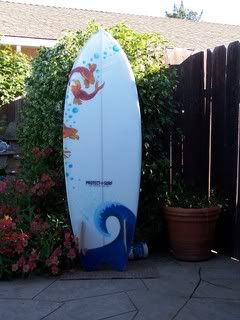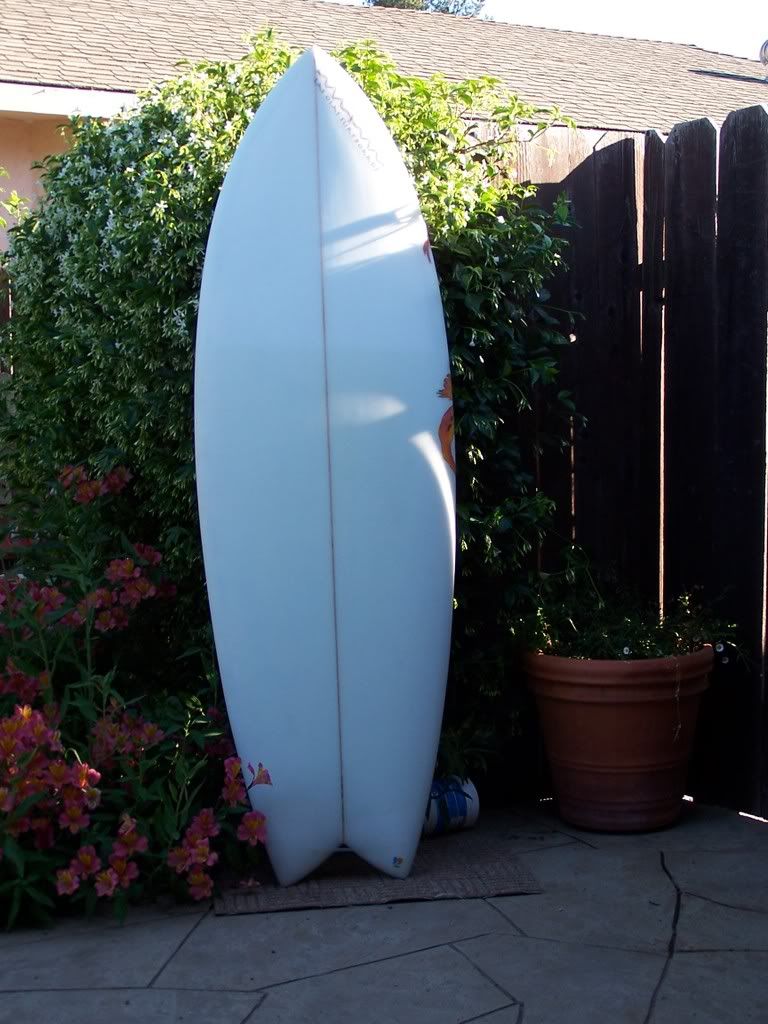If your new to shaping, here are some “shaping for dummies” thoughts:
Yea…retro fish have down rails, and it’s true that a 60/40 rail is a “down rail,” because the apex is lower than half way from the deck to the bottom. You have to blend the rail radius into the bottom, so you have to have come kind of “return” curve into the bottom, but there doesn’t have to be an edge if you don’t want it to have one. Leave an edge if you want… round it off and smooth it in if you don’t.
Once the blank is templated and foiled to thickness, make dots along the outside, vertical plane that will be your rail half way between the bottom and the deck. This is a basic reference point. Then, put the blank on the rack bottom up, and use either a Fred Tool or a pretty agressive abrasive, like dragon skin or something like 36 grit, and round off the bottom edge into the the shape you want the bottom of the rail to have, keeping the vision of the finished rail in your head, and using the dots as reference points. Don’t bother even touching the front or back 12 inches (or more, especially in the back). Save that for the finish shaping stage. The less you take off the bottom edge, the fuller the rail will be, and the lower the apex. If you take it all the way to the dot, you’ll have 50/50 rails at best, or up rails (you don’t want those on a traditional fish). When you have the bottom curve the way you want, flip it over and do the deck side rail bands. For sloping, angular, down rails, you can do one rail band with the planer, then blend it into the deck and rail radius with a surform, then dragon skin or 40 grit on a padded block, then 80 grit on a padded block. If you want more of a “modern” rail, do two bevels with the planer, then blend them into each other, and into the deck and rail radius, with a surform, then 40 grit, then 80 grit. Once you’re at the surform stage, go with a really light touch, and only take down the “corners”. Then go to your padded block to do the true blending. With each successive tool, walk the blank from nose to tail and back, sliding along the corner the entire way, several times, until it’s a smooth, blended curve from the stringer, around the rail, and onto the flats of the bottom.
Shape out the nose and tail rails by hand/eye with the hard side of the block with 80 grit, skipping the dragon skin and surform. Finish with 100 grit on the foam side, or use foam pad abrasives.
Swallows should be cut at the very end with a coping saw, then blended with sandpaper. It helps to trace the tail onto heavy paper, fold it in half, make a template, then unfold it and trace the pattern onto the foam.





